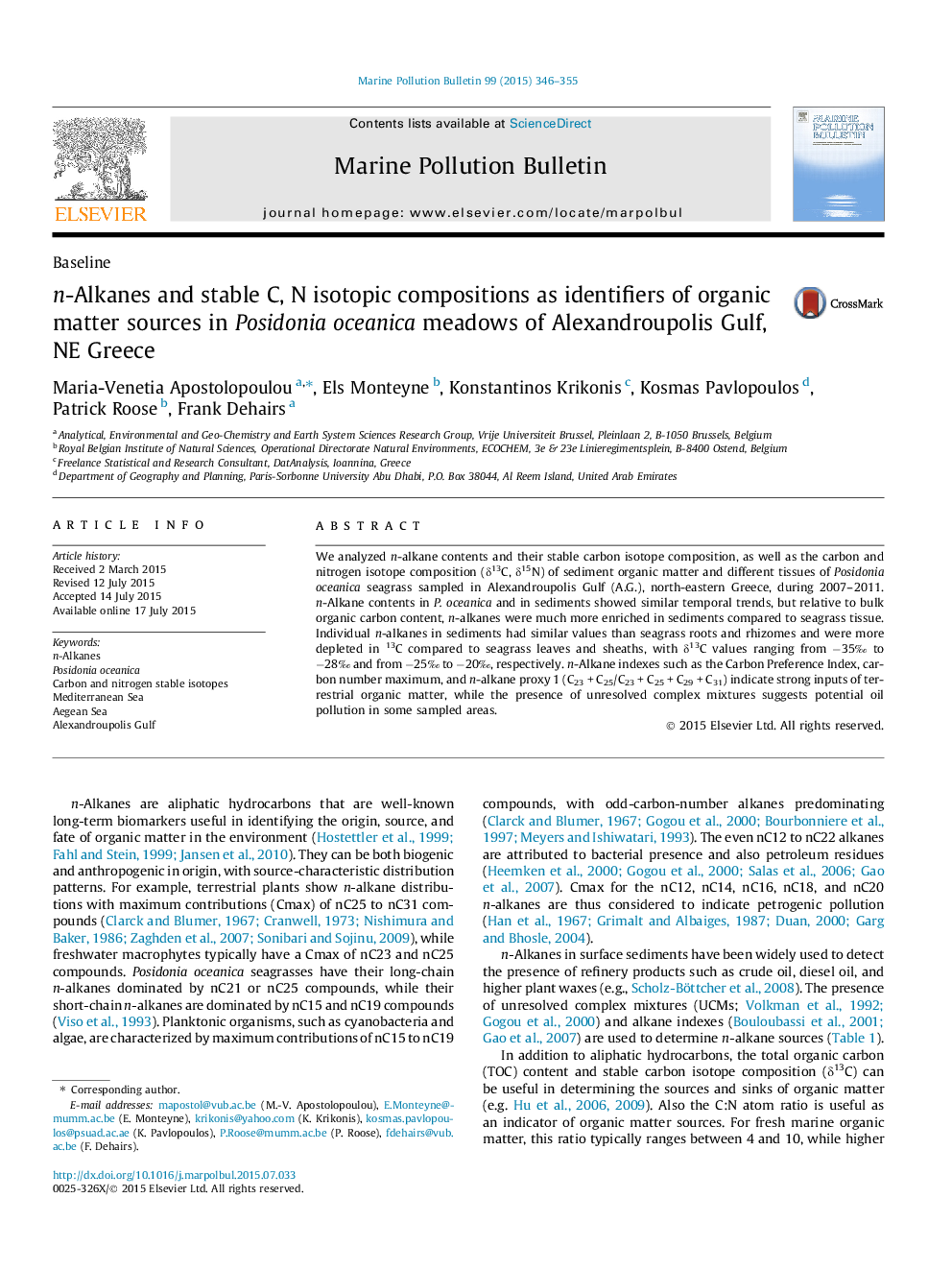| Article ID | Journal | Published Year | Pages | File Type |
|---|---|---|---|---|
| 4476685 | Marine Pollution Bulletin | 2015 | 10 Pages |
•We measured n-alkanes and isotopic composition in various samples in the Aegean Sea.•Terrestrial and petroleum origin in Alexandroupolis Gulf was tested from 2007 to 2011.•We provide baseline information on n_alkanes and isotopic composition for P. oceanica.
We analyzed n-alkane contents and their stable carbon isotope composition, as well as the carbon and nitrogen isotope composition (δ13C, δ15N) of sediment organic matter and different tissues of Posidonia oceanica seagrass sampled in Alexandroupolis Gulf (A.G.), north-eastern Greece, during 2007–2011. n-Alkane contents in P. oceanica and in sediments showed similar temporal trends, but relative to bulk organic carbon content, n-alkanes were much more enriched in sediments compared to seagrass tissue. Individual n-alkanes in sediments had similar values than seagrass roots and rhizomes and were more depleted in 13C compared to seagrass leaves and sheaths, with δ13C values ranging from −35‰ to −28‰ and from −25‰ to −20‰, respectively. n-Alkane indexes such as the Carbon Preference Index, carbon number maximum, and n-alkane proxy 1 (C23 + C25/C23 + C25 + C29 + C31) indicate strong inputs of terrestrial organic matter, while the presence of unresolved complex mixtures suggests potential oil pollution in some sampled areas.
